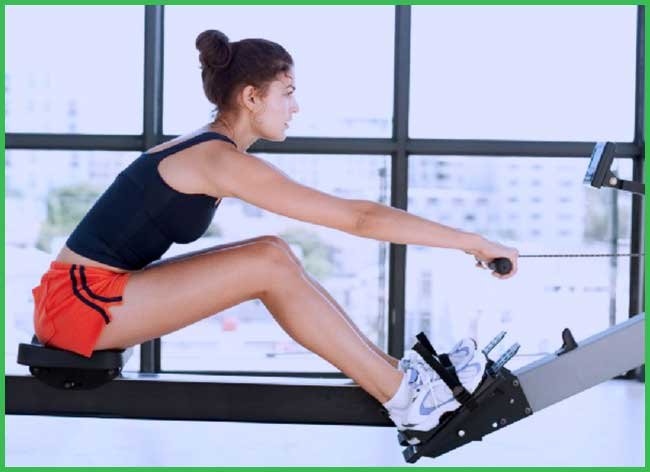
If you want to start a fitness program, it may be one of the brilliant decisions you can do for your health.
Physical movements can decrease your possibility of continual disease, get better your coordination and balance, help you to lose weight and even get better your sleeping habits.
Are you ready to start a beginner fitness program now? Excellent!
You are staying five steps away from a fit and healthy life. Read these how?

5 Steps for a Beginner Fitness Program-
-
Evaluate your Fitness Level:

Do you possibly have a few ideas of how fit you are?
Evaluating and recording a Beginner Fitness Program mark can give you targets against which to calculate your improvement.
To evaluate your muscular and aerobic fitness, flexibility, and body mass, thinks about writing down:
- Your pulse speed prior to and instantly after walking one mile.
- How long do you spend walking one mile or four hundred meters, or how long do you take to run 1.5 miles?
- How many standard pushups, half sit-ups, or adapted pushups you can do at once?
- You’re BMI.
- How far can you reach frontward when seated on the ground with your legs in front of you?
- Your waist limits, just on top of your hipbones.
-
Plan your Fitness Program:

There is no doubt that you will do exercises daily. But you will require a plan.
As you make a blueprint of your fitness program, remember to keep these things below:
-
Think about your Fitness Goals:
Your fitness program is for losing weight?
Or do you have one more motivation, for example taking preparation for a marathon?
Having clear goals can assist in measuring your improvement and staying motivated.
-
Make a Balanced Schedule:
The Human and Health Services suggest doing a minimum of 150 minutes of moderate aerobic movement or 75 minutes of strong aerobic activity weekly, or a mixture of strong and moderate movement.
Such as, do about thirty minutes of aerobic exercise on maximum days in a week.
Also, try to include power training of all the main muscle groups into a fitness schedule at a minimum of 2 days a week.
-
Start Low and Improve Gradually:
If you’re just starting to work out, start carefully and improve gradually.
If you have any kind of medical condition or injury, ask your doctor or an exercise therapist for planning a fitness program that slowly betters your movement, power, and stamina.
-
Make Activity into Your Every Day Schedule:
It may be challenging to find time for doing exercise.
Make it easy, plan time to exercise, if you have any other meeting.
Make a Plan to watch your preferred show during a walk on the treadmill, read any interesting thing riding on a stationary bike, or take a break to continue a walk at work.
-
Take Plans to include Different Tasks:
Dissimilar movements (cross-training) can remain the dullness at bay.
Cross-training applying low-impact type of movement, for example, water exercise or biking also decreases the possibility of injuries or overdriving specific joint or muscle.
Plan to change among movements, for example, swimming, walking, and strength training.
-
Give Time for Improvement:
Maximum people start exercising with frantic eagerness such as exercising too strong or too long. Stop while your joints and muscles become painful or injured. The plan between relaxing sessions and recovering time.
-
Write On Paper:
A written chart may give you the confidence to follow the fitness plan.
-
Test your Equipment:

You may start with athletic shoes.
Confirm to select shoes designed for the movements have in your mind.
For instance, running shoes are more comfortable in weight than cross-training shoes.
If you are making a plan to buy workout equipment, prefer something that is realistic, enjoyable and easy to apply.
You may test equipment at a fitness center prior to buying your own.
You might think about applying fitness apps or other movement tracking devices for tracking distance, checking heart speed and the number of burning calories.
-
Get started:
At this moment you are ready to gain the achievement.
As you start your Beginner Fitness Program, remember continuing these tips:
-
Start Gradually and Increase Slowly:
Give much time to heat up and cool down with mild stretching. After that, speed up for 5 to 10 minutes without getting too tired.
As your resistance improves, slowly increase the time (30 to 60 minutes of activity maximum days of the week).
-
Divide your Exercise Sessions:
You don’t need to do all exercises at a time, so you can divide the activities during your day.
That means Short and regular sessions.
Doing a 10-minutes of exercise sessions 3 times a day may be better than a particular 30-minute session.
-
Be Creative:
Maybe your workout schedule has different activities, for example, rowing, walking, or bicycling. But don’t do only these things.
Take a weekend for an evening ballroom dancing or climb the mountain with your family.
Try to find activities you like to include in your fitness schedule.
-
Be Flexible:
If you are not feeling good, give yourself 1 or 2 days off.
-
Listen to your Body:
If you feel shortness of breath, pain, faintness, or vomiting, take a break.
-
Keep an Eye on Your Development:
Check your personal fitness after 6 weeks and then every month. You may see that you require increasing the time to carry on better.
You will be greatly surprised to find your fitness goals.
If you lose inspiration, try to set a new movement or new goals.
Doing exercise with a buddy or attending a session at a fitness center may help, also.
Getting started a Beginner Fitness Program is the right decision.
But it shouldn’t be overtaking. Take a plan carefully and step yourself, you can create a healthy habit that continues lifelong.





